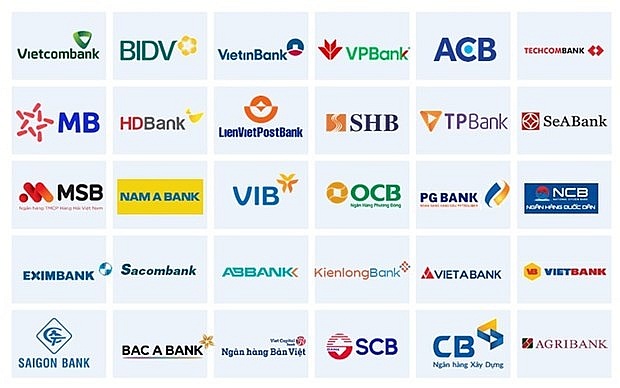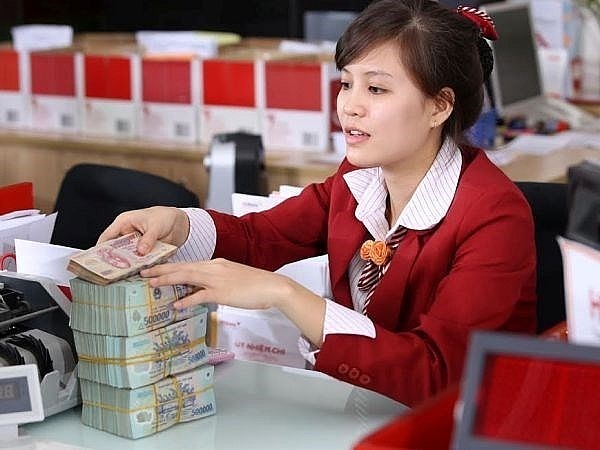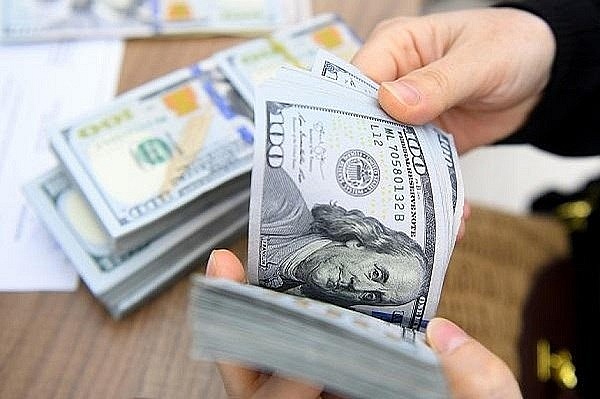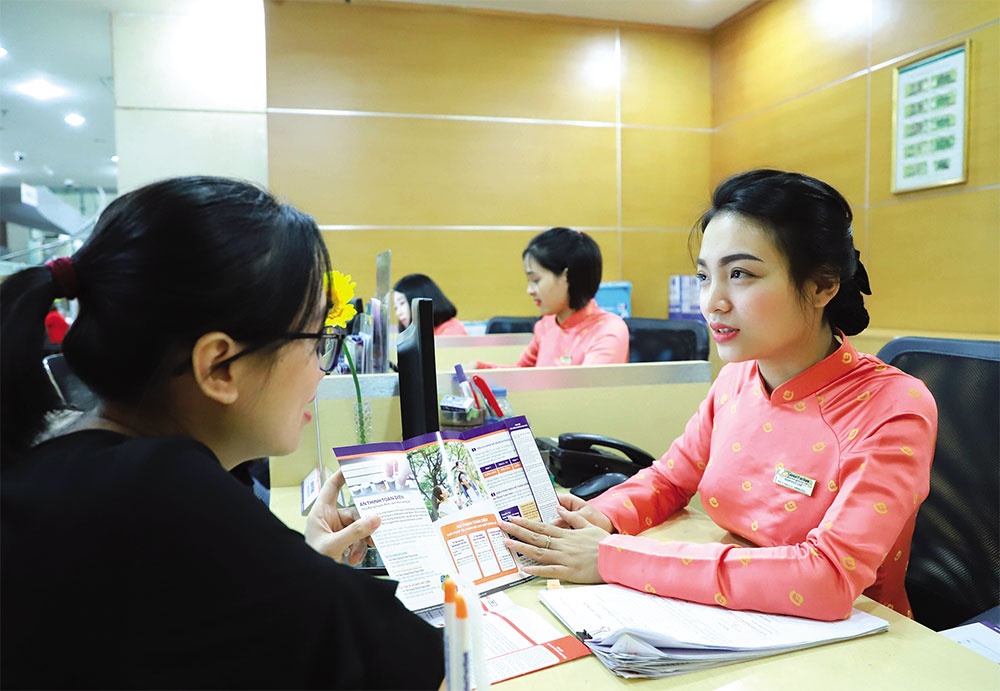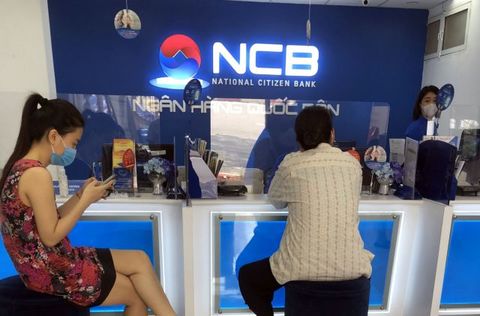Cash flows into overseas Vietnamese homeland continue to support its rise
Cash flows into overseas Vietnamese homeland continue to support its rise
Over the past years, Vietnamese overseas have helped improve livelihoods back home with increasingly large remittances, with inflows into the nation expected to continue increasing this year.
Over the next two months, Tran Manh Kien in Hanoi’s Bac Tu Liem district will complete his new 3-storey house worth about VND1 billion (nearly $43,500). The 53-year-old has been dreaming about such an asset for years.
Previously, his 5-member family lived in a small tile-roofed house with a total monthly income of VND8 million ($350), which made it difficult for them to afford livelihood. “However, everything changed when my sons went to work in Japan and South Korea in 2019,” Kien said.
One of his sons is now working for Hyundai Group’s ship-building maker Staco Company with a monthly wage of $2,500, seven times higher than his family’s previous income. He sent $1,500 a month to his home. The other son, currently working for an electronic company in Japan, sends the same money back every month.
“If they were not working overseas, we would never have the new house,” Kien said.
Near Kien’s house is also a newly-repaired one owned by 60-year-old Do Huu Co, who said that he has been happy to receive $1,200 a month for the past four years from his son, an electronics engineer in Japan.
“Thanks to the money, I’ve repaired my house and bought a small van,” he said. “My wife has stopped working as a vendor, and we have opened a small shop at home.”
According to the Ministry of Foreign Affairs, more than 5.3 million people are living and working permanently in 130 countries and territories.
Hundreds of thousands of Vietnamese workers live and work overseas under labour contracts in 40 countries and territories worldwide. Overseas Vietnamese workers send billions of US dollars back to their homes in Vietnam annually. This has been helping hundreds of thousands of families and workers escape poverty and improve their livelihoods.
Strong growth
According to some local companies allowed by the Ministry of Labour, Invalids, and Social Affairs (MoLISA) to send local labourers abroad to work, salaries offered to workers vary in different markets, depending on the work type.
For example, the monthly salary for manual workers averages $850 in Taiwan, $1,000 in Saudi Arabia, and $500 in Laos. However, salaries for skilled workers like engineers in these markets may triple.
Overseas workers often send two-thirds of their monthly income back home.
Nguyen Phi Hung, director of the Centre for Training and Education for Labourer Exports in Hanoi, said that in 2022, the centre had set a target of sending about 500 workers to Brunei, the United Arab Emirates, Taiwan, Malaysia, Japan, and Belarus.
“About 300 workers have been sent to these places, and we are making efforts to complete the target at the year’s end,” Hung said. “On average, each worker sends home roughly $500 per month. So they sent home a total of about $150,000 every month,” he said.
According to the MoLISA’s Department of Overseas Labourer Management, in the first six months of this year, the total number of Vietnamese people sent to work overseas under labour contracts hit about 51,680, with the most headed to Japan (over 32,000), Taiwan (over 15,600), and South Korea (over 1,200). Vietnam expects to send about 90,000 labourers overseas this year.
Remittances contribute to Vietnam’s socioeconomic development and macroeconomic stability. They were the second largest source of capital (after foreign direct investment disbursement at around $20 billion) during 2020-2021.
In a specific case, Do Huu Lien, a Vietnamese doctor in Germany’s Düsseldorf for over 20 years, said he often sends $2,000 per month to his home in Hanoi, and his son has used the money to build a 5-storey house and buy some plots of land.
“We would have been unable to build this house without this money,” Lien said. “In Düsseldorf, many of our relatives and friends annually send thousands of euros back to their home, and the money is used for investment, expanding production, building houses, and savings.”
According to the World Bank’s Migration and Development Brief released in May, remittances grew at a 5 per cent pace per year in 2021 to reach $18.1 billion in Vietnam, higher than the $17.2 billion in 2020.
Last year, Vietnam was ranked among the 10 top recipients among low- and middle-income countries. These nations included India ($89 billion), Mexico ($54 billion), China ($53 billion), the Philippines ($37 billion), Egypt ($32 billion), Pakistan ($31 billion), Bangladesh ($22 billion), Nigeria ($19 billion), and Ukraine ($18 billion).
Notably, Vietnam and the Philippines “enjoyed positive spillovers from the United States in the form of a fast and strong recovery, generous stimulus payments, as well as record employment and wage growth in 2021,” the World Bank stated, adding that last year, remittances into Vietnam accounted for 4.9 per cent of GDP.
However, according to the State Bank of Vietnam (SBV), remittance inflow to Vietnam hit $12.5 billion last year, up 10 per cent over 2020. As much as 70 per cent of remittances were transferred through financial institutions, 28 per cent via remittance businesses, and 2 per cent through postal services.
Brighter outlook
According to the World Bank, remittance inflows to the Philippines and Vietnam are expected to grow 4.4 per cent in 2022 and 3.6-4.5 per cent in 2023, meaning $18.79 billion this year and $18.6-18.8 billion next year.
However, such a projection will largely depend on the global economy, especially the US and East Asia and Pacific, whose remittance flows reached $133 billion in 2021.
The outlook for East Asia and the Pacific for 2022 and 2023 is heavily coloured by the prevailing global economic conditions featuring a heavy dose of food and fuel inflation, higher interest rates and forecasts of a slowdown in economic growth in the countries of the Organisation for Economic Co-operation and Development.
“Recent experience revealed that despite a global recession and severe pain inflicted on workers, remittance flows to the East Asia and Pacific region did not respond positively and charted a countercyclical trajectory in 2020 and 2021,” the World Bank stated.
“Alongside expectations of continued regional economic recovery in 2022, this trend suggests that, on average, remittances to that region will be flat, growing by a modest 0.3 per cent both in 2022 and 2023.”
Economic expert Can Van Luc said, “Generally speaking, remittances into Vietnam are still increasing thanks to the positive recovery of the global economy, and overseas Vietnamese’ incomes are bouncing back.
Moreover, Vietnam currently has many attractive investment channels, and overseas Vietnamese want to send money to their homes both to support their families and invest for profit.”
Luc forecasted that in 2022, remittance into Vietnam will continue its recovery trend and may grow 5-7 per cent on-year.
Meanwhile, Tran Manh Kien said next year, his two sons would end their labour contracts in Japan and South Korea, and their employers will continue employing them for another three years.
“They want to earn more money for my family to buy a car. If they worked in a Vietnamese company, they wouldn’t be paid such a big salary,” he said.
Do Huu Co said he would continue saving money sent from his son in Japan to build a new house. “My son said we will have a new house over the next two years because he has recently got a pay rise. This means we can receive about $1,500 per month,” he said.
The SBV’s Ho Chi Minh City branch said that remittances to the city via credit institutions and economic organisations in the first half of 2022 hit $3.16 billion, down 13 per cent on-year.
The city was estimated to have received $6.5-6.6 billion in remittances last year and is among the biggest receivers in Vietnam, accounting for about 30 per cent of the total.





